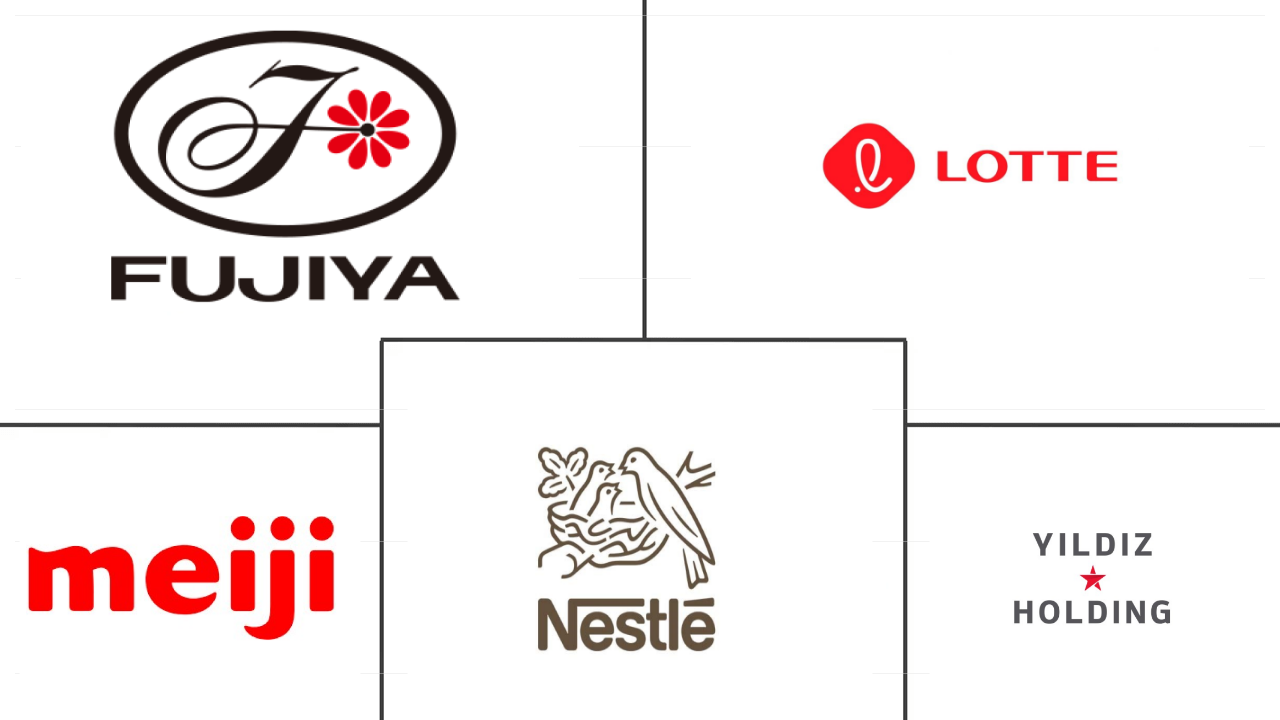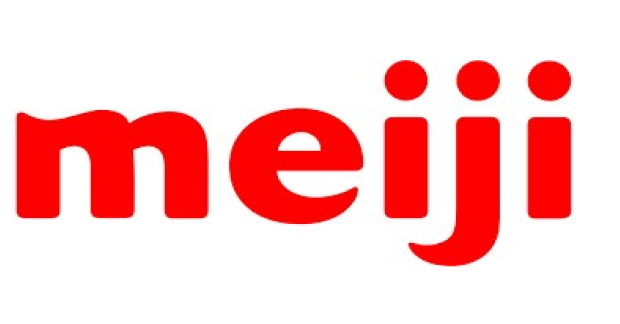Market Size of japan chocolate Industry
|
|
Study Period | 2018 - 2030 |
|
|
Market Size (2024) | USD 5.60 Billion |
|
|
Market Size (2030) | USD 6.50 Billion |
|
|
Largest Share by Distribution Channel | Convenience Store |
|
|
CAGR (2024 - 2030) | 2.50 % |
|
|
Fastest Growing by Distribution Channel | Online Retail Store |
Major Players |
||

|
||
|
*Disclaimer: Major Players sorted in no particular order |
Japan Chocolate Market Analysis
The Japan Chocolate Market size is estimated at 5.60 billion USD in 2024, and is expected to reach 6.50 billion USD by 2030, growing at a CAGR of 2.50% during the forecast period (2024-2030).
5.60 Billion
Market Size in 2024 (USD)
6.50 Billion
Market Size in 2030 (USD)
1.11 %
CAGR (2018-2023)
2.50 %
CAGR (2024-2030)
Largest Segment by Confectionery Variant
71.54 %
value share, Milk and White Chocolate, 2023
The innovative flavor offerings possible in White chocolate, followed by the preference for varied taste profiles in the region, are anticipated to drive segmental growth.
Largest Segment by Distribution Channel
37.81 %
value share, Convenience Store, 2023
Regulatory measure has encouraged foreign players to focus their investments on larger stores in the region with tailored products, making it a major segment in the region.
Fastest-growing Segment by Confectionery variant
3.02 %
Projected CAGR, Dark Chocolate, 2024-2030
The escalating sales of premium-quality Dark chocolate products in the country and rising consumer expenditure capacities are creating market growth in the region.
Fastest-growing Segment by Distribution Channel
3.11 %
Projected CAGR, Online Retail Store, 2024-2030
The ease of shopping experience through online channels and the increasing number of retailers present in this channel has become the major driver in the segment.
Leading Market Player
5.81 %
market share, Meiji Holdings Company Ltd, 2022

Availability of wide product portfolio with growing number of SKUs tailored accordingly to meet wider consumer needs is making Meiji the largest growing company in the market.
Increasing networking of stores benefits the supermarkets/hypermarkets and convenience stores, making almost 70% of the value share
- Convenience stores are the primary sales channel for chocolates in Japan. They provide an ideal platform for chocolate brands to showcase their products. Convenience stores are the preferred choice of consumers for buying a wide range of chocolate, including milk and dark chocolates, made locally or imported from other countries. The sales value of chocolate through convenience stores increased by 1.7% in 2023 compared to 2022.
- The growing number of convenience stores is another factor anticipated to offer profitable growth opportunities for the chocolate market. As of 2022, there were over 58,000 convenience stores across Japan, most open 24 hours a day, 7 days a week. Among these, 7-Eleven had more than 21,000 stores in Japan, making it the largest convenience store chain in Japan. Family Mart stood in second place with 16,500 locations in Japan.
- After convenience stores, supermarkets and hypermarkets are Japan's second most widely preferred distribution channels for chocolate purchases. The sales value of chocolates in supermarkets and hypermarkets grew by 4.5% from 2021 to 2023. They offer consumers a convenient experience of diverse shopping under a single roof. They provide consumers a premium advantage, i.e., higher availability of chocolate confectionery products at discounts and easy checkouts.
- Online retail channels are expected to grow at the highest rate in the forecast period due to convenience, discounted rates, and one-day delivery options. The sales value of chocolates through online retail channels is expected to register a CAGR of 2.99% from 2023 to 2029.
Japan Chocolate Industry Segmentation
Dark Chocolate, Milk and White Chocolate are covered as segments by Confectionery Variant. Convenience Store, Online Retail Store, Supermarket/Hypermarket, Others are covered as segments by Distribution Channel.
- Convenience stores are the primary sales channel for chocolates in Japan. They provide an ideal platform for chocolate brands to showcase their products. Convenience stores are the preferred choice of consumers for buying a wide range of chocolate, including milk and dark chocolates, made locally or imported from other countries. The sales value of chocolate through convenience stores increased by 1.7% in 2023 compared to 2022.
- The growing number of convenience stores is another factor anticipated to offer profitable growth opportunities for the chocolate market. As of 2022, there were over 58,000 convenience stores across Japan, most open 24 hours a day, 7 days a week. Among these, 7-Eleven had more than 21,000 stores in Japan, making it the largest convenience store chain in Japan. Family Mart stood in second place with 16,500 locations in Japan.
- After convenience stores, supermarkets and hypermarkets are Japan's second most widely preferred distribution channels for chocolate purchases. The sales value of chocolates in supermarkets and hypermarkets grew by 4.5% from 2021 to 2023. They offer consumers a convenient experience of diverse shopping under a single roof. They provide consumers a premium advantage, i.e., higher availability of chocolate confectionery products at discounts and easy checkouts.
- Online retail channels are expected to grow at the highest rate in the forecast period due to convenience, discounted rates, and one-day delivery options. The sales value of chocolates through online retail channels is expected to register a CAGR of 2.99% from 2023 to 2029.
| Confectionery Variant | |
| Dark Chocolate | |
| Milk and White Chocolate |
| Distribution Channel | |
| Convenience Store | |
| Online Retail Store | |
| Supermarket/Hypermarket | |
| Others |
Japan Chocolate Market Size Summary
The Japan chocolate market is experiencing a steady expansion, driven by the increasing popularity of chocolate products and the evolving consumer preferences towards convenience and sustainability. Convenience stores serve as the primary sales channel, offering a strategic platform for chocolate brands to reach consumers. These stores, along with supermarkets and hypermarkets, provide a diverse range of chocolate options, including both local and imported varieties. The growth of online retail channels is also notable, as they offer consumers the convenience of shopping from home with benefits like discounted rates and quick delivery options. The market is characterized by a shift towards multi-pack purchases, influenced by changes in consumer behavior post-pandemic, and a growing interest in high cacao products, which are promoted for their health benefits.
Sustainability and ethical sourcing have become significant factors influencing consumer choices in the Japanese chocolate market. The market is fragmented, with major players like Fujiya Co. Ltd, Lotte Corporation, Meiji Holdings Company Ltd, Nestlé SA, and Yıldız Holding AS holding a modest share. Recent initiatives, such as Lotte Corporation's partnership with DLT Labs to enhance cacao bean traceability and monitor child labor, highlight the industry's commitment to ethical practices. The market's growth is further supported by the introduction of new product lines and limited edition offerings, which cater to the evolving tastes and preferences of Japanese consumers.
Japan Chocolate Market Size - Table of Contents
-
1. MARKET SEGMENTATION (includes market size in Value in USD and Volume, Forecasts up to 2030 and analysis of growth prospects)
-
1.1 Confectionery Variant
-
1.1.1 Dark Chocolate
-
1.1.2 Milk and White Chocolate
-
-
1.2 Distribution Channel
-
1.2.1 Convenience Store
-
1.2.2 Online Retail Store
-
1.2.3 Supermarket/Hypermarket
-
1.2.4 Others
-
-
Japan Chocolate Market Size FAQs
How big is the Japan Chocolate Market?
The Japan Chocolate Market size is expected to reach USD 5.60 billion in 2024 and grow at a CAGR of 2.50% to reach USD 6.50 billion by 2030.
What is the current Japan Chocolate Market size?
In 2024, the Japan Chocolate Market size is expected to reach USD 5.60 billion.

